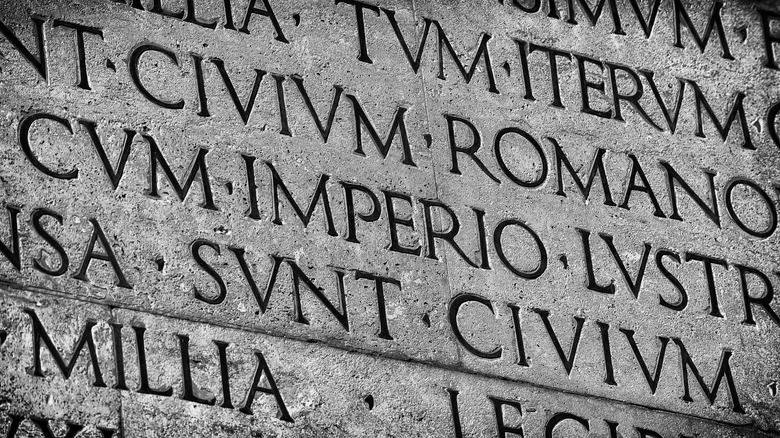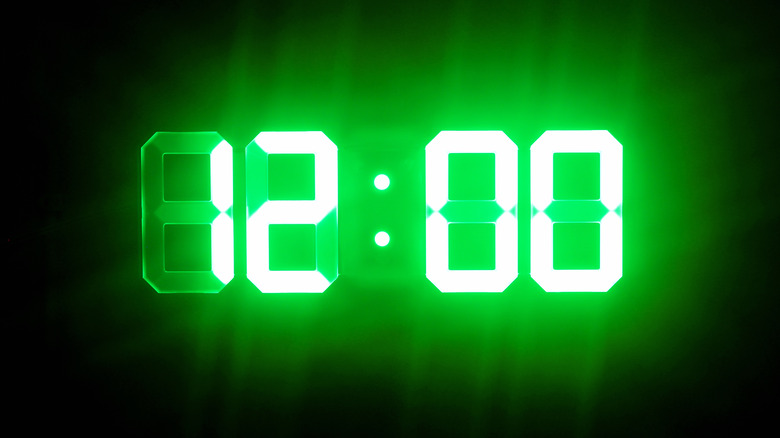Here's What Am And Pm Really Stand For
You probably use the terms "a.m." and "p.m." every day, and you might think that a.m. means "after midnight" and that p.m. refers to any time "past midday." While that's a nice way to remember the difference between the two, it's not what a.m. and p.m. stand for. To find out where these measurements come from, we have to go back to ancient Egypt and Mesopotamia, where the first 12-hour systems for keeping time were used. According to Ancient Origins, sundials were used to keep time during the day, and water clocks were used to measure time at night, both separating night and day.
Mechanical clocks, which used verge-and-foliot systems, were invented in the 14th century, and by the 16th century, German inverter Peter Henlein invented a spring-loaded clock, per Thought Co. Further advancing the evolution of clock mechanisms, Christian Huygens invented the pendulum and balance wheel clocks in the 17th century. And, yet, through all of these improvements in timekeeping, the a.m. and p.m. distinctions remained. So, what do they really stand for?
Blame it on Latin
Many phrases we commonly use have Latin origins. While no country uses Latin as an official language, there is evidence of it practically everywhere in the English-speaking world. According to Your Dictionary, about 80% of the words we use today have Latin roots. For instance, the phrases "carpe diem," "et cetera," "vice versa," "bona fide," "ad nauseam," and "rigor mortis" are all Latin.
So, it shouldn't be a big surprise that a.m. and p.m. are actually Latin phrases. Simply put, a.m. means "ante merīdiem" which means "before midday" in Latin, and p.m. means "post merīdiem," which, of course, means "after midday." Time and Date explains that 1 a.m. is one hour after midnight and 11 p.m. is one hour before midnight. You might see a.m. written out as AM, am, or A.M., and all of these forms are acceptable and easily recognized.
What about noon and midnight?
While the 12-hour timekeeping system works pretty well, there is a problem with midnight and noon. According to Dictionary, there is actually a Latin phrase for noon: "merīdiēs," which is denoted as "m." That said, it isn't used often, and most won't recognize it.
Not including the rarely-used term merīdiēs, there is no logical way to identify noon and midnight with the a.m./p.m. system. Time and Date points out that for many, midnight is 12 a.m. and noon is 12 p.m. However, to be perfectly clear, it might be best to simply say noon or midnight or 12 noon or 12 midnight. However, 12 a.m. on any specific date still might cause some confusion. One way to avoid any confusion would be to add one minute to the time which would likely remove all doubt. You could also refer to military time, which marks 24:00 as the official end of the day.


